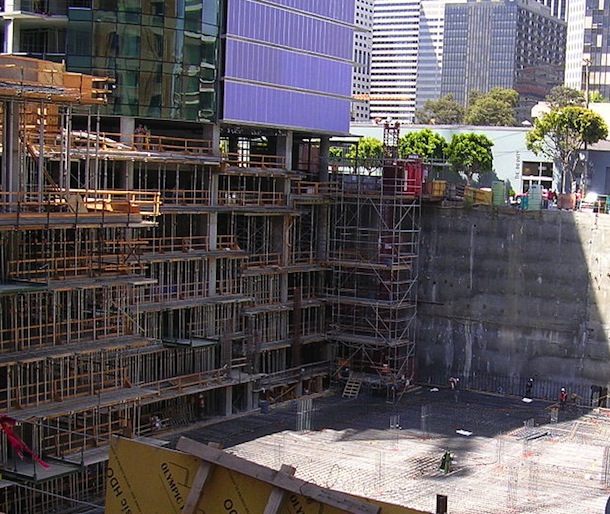Engineering and construction CEOs are more optimistic this year than in previous years, according to PwC’s 2014 Global CEO Survey. Forty-one percent of respondents expect to grow over the next 12 months, up from 31% last year.
This and other big-picture facts are available in the survey, which provides multiple “snapshots” of the engineering and construction sectors, including growth markets, government impact on the industry, transformative global trends, and concerns about sustainability and climate trends.
Here are some of the snapshots we found the most interesting (read the full report):
- 50% of CEOs in the engineering and construction sector believe the global economy will improve over the next 12 months; 9% believe it will decline
- 78% of sector CEOs are concerned about how governments will respond to deficit and debt in the next year—this is the concern that the highest number of engineering and construction CEOs reported worrying about
- 76% of sector CEOs are worried about high and volatile raw material prices
- Concerns about infrastructure gaps are a consistent concern—47% of sector CEOs reported concerns that inadequacy of infrastructure could hurt growth, 50% think that infrastructure think it should be one of their government’s top 3 priorities, and 41% feel that the government is ineffective (as opposed to 33% who believe that the government is effective)
- The U.S. topped the list of growth markets, and the Middle East ranked much higher as growth markets for engineering and construction CEOs than for other sectors
- Cost reduction heads the list of restructuring activities
- 69% of sector CEOs believe that technological advances such as the digital economy, Big Data, and social media will be the biggest transformative trend for their businesses in the next year
- E&C CEOs are significantly more worried about the availability of key skills in their workforces than are other industries.
- 89% of E&C CEOs say it’s important for their company to try and reduce their environmental footprint.
- 59% of E&C CEOs believe that resource scarcity and climate change will transform their business
For more, read the full report.
Related Stories
| Feb 15, 2011
New Urbanist Andrés Duany: We need a LEED Brown rating
Andrés Duany advocates a "LEED Brown" rating that would give contractors credit for using traditional but low cost measures that are not easy to quantify or certify. He described these steps as "the original green," and "what we did when we didn't have money." Ostensibly, LEED Brown would be in addition to the current Silver, Gold and Platinum ratings.
| Feb 15, 2011
AIA on President Obama's proposed $1 billion investment in energy conservation
The President’s budget increases the value of investment in energy conservation in commercial buildings by roughly $1 billion, reports AIA 2011 President Clark Manus, FAIA. The significant increase from the current tax deduction of $1.80 per sq. ft. now on the books is an increase for which the AIA has been advocating in order to encourage energy conservation.
| Feb 14, 2011
Sustainable Roofing: A Whole-Building Approach
According to sustainability experts, the first step toward designing an energy-efficient roofing system is to see roof materials and systems as an integral component of the enclosure and the building as a whole. Earn 1.0 AIA/CES learning units by studying this article and successfully completing the online exam.
| Feb 11, 2011
Four Products That Stand Up to Hurricanes
What do a panelized wall system, a newly developed roof hatch, spray polyurethane foam, and a custom-made curtain wall have in common? They’ve been extensively researched and tested for their ability to take abuse from the likes of Hurricane Katrina.
| Feb 11, 2011
RS Means Cost Comparison Chart: Office Buildings
This month's RS Means Cost Comparison Chart focuses on office building construction.
| Feb 11, 2011
Sustainable features on the bill for dual-building performing arts center at Soka University of America
The $73 million Soka University of America’s new performing arts center and academic complex recently opened on the school’s Aliso Viejo, Calif., campus. McCarthy Building Companies and Zimmer Gunsul Frasca Architects collaborated on the two-building project. One is a three-story, 47,836-sf facility with a grand reception lobby, a 1,200-seat auditorium, and supports spaces. The other is a four-story, 48,974-sf facility with 11 classrooms, 29 faculty offices, a 150-seat black box theater, rehearsal/dance studio, and support spaces. The project, which has a green roof, solar panels, operable windows, and sun-shading devices, is going for LEED Silver.
| Feb 11, 2011
BIM-enabled Texas church complex can broadcast services in high-def
After two years of design and construction, members of the Gateway Church in Southland, Texas, were able to attend services in their new 4,000-seat facility in late 2010. Located on a 180-acre site, the 205,000-sf complex has six auditoriums, including a massive 200,000-sf Worship Center, complete with catwalks, top-end audio and video system, and high-definition broadcast capabilities. BIM played a significant role in the building’s design and construction. Balfour Beatty Construction and Beck Architecture formed the nucleus of the Building Team.
| Feb 11, 2011
Kentucky’s first green adaptive reuse project earns Platinum
(FER) studio, Inglewood, Calif., converted a 115-year-old former dry goods store in Louisville, Ky., into a 10,175-sf mixed-use commercial building earned LEED Platinum and holds the distinction of being the state’s first adaptive reuse project to earn any LEED rating. The facility, located in the East Market District, houses a gallery, event space, offices, conference space, and a restaurant. Sustainable elements that helped the building reach its top LEED rating include xeriscaping, a green roof, rainwater collection and reuse, 12 geothermal wells, 81 solar panels, a 1,100-gallon ice storage system (off-grid energy efficiency is 68%) and the reuse and recycling of construction materials. Local firm Peters Construction served as GC.














